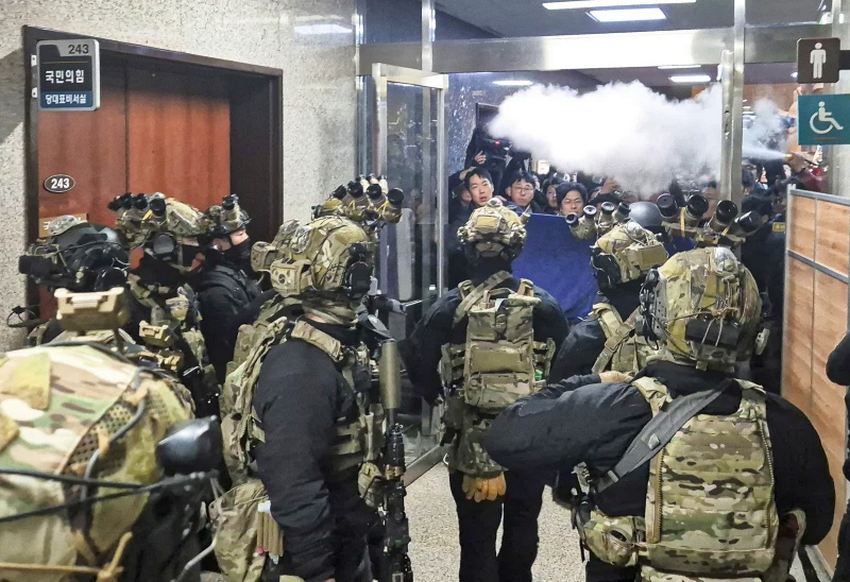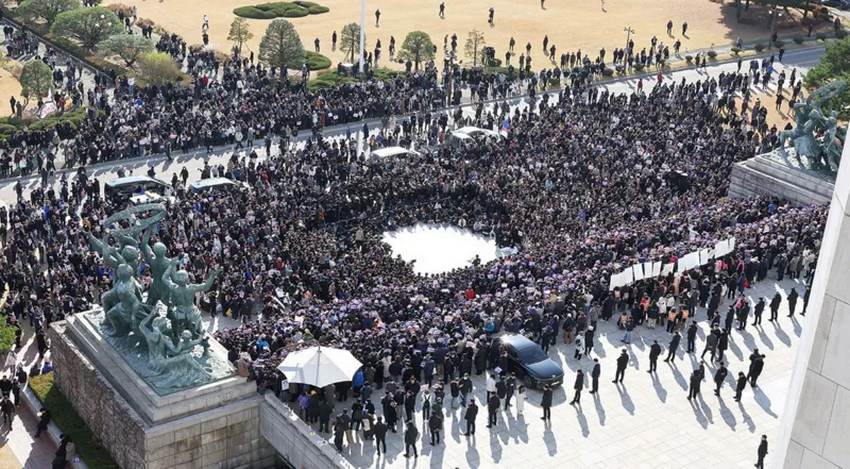
South Korean president Yoon Suk Yeol now faces resignation, impeachment and even exile after his muffed attempt at a self-coup designed to keep him in power. Faced initially with disbelief, alarmed NationaL Assembly members evaded army barricades, climbed over fences and fought armed military personnel in the building with fire extinguishers. The president initially claimed justification in his middle-of-the-night TV appearance on December 3 by calling his political opponents “a den of criminals” although he also cited the outside threat from North Korea.
By contrast, recent Thai army coups in 2006 and 2014 were justified at the time by much broader claims that the revered Thai monarchy was under threat and by a long list of perceived corrupt practices in government. These were not knee-jerk reactions so evident in the moves by the South Korean president. The 2014 Thai putsch occurred only after weeks-long Bangkok street demonstrations called in support of the traditional monarchy and Thai values. Of course, both 21st century Thai coups were essentially anti-Shinawatra moves against the perceived power of the ruling clan which had nurtured the rural poor and alienated the established Bangkok-based power elites.
By contrast, the recent South Korean botched coup was very obviously the reaction of a lame duck president faced with gross unpopularity, motions to impeach his appointees in the National Assembly and the failure of his budget to muster enough votes. Not to mention the claims that his wife had accepted some very expensive “gifts”. Another immediate factor in his mind were the striking doctors and medical trainees who were specifically ordered back to work in the short-lived martial law declaration. He also likely feared a jail sentence if prosecuted as at least two of his predecessors had served time for corrupt practices such as stock price manipulation.

But the real failure of president Yoon Suk Yeol was in the lack of detailed preparation for a dictatorial take-over of the country. Army command failed to take immediate physical control of the National Assembly and did not immediately close down all hostile media headquarters in the capital Seoul after the president’s broadcast. The army did land several helicopters on the National Assembly roof, but failed to take into custody the leaders of opposition parties and factions. The president’s TV broadcast occurred in the middle of the night whilst most people were usefully asleep, but city centers were not garrisoned and angry crowds soon gathered with the internet, as ever, being the recruiting sergeant.
Thailand’s putschists would never have made these mistakes. Troops were being rushed to provincial capitals even as the 2014 announcement was being made on TV by army leader general Prayut Chan-o-cha. The immediate curfew meant that convoys of army personnel travelled on motorways which were devoid of civilian traffic. By morning, organized opposition was impossible even though this was the first coup without the appearance of tanks in the streets of Bangkok. The key to a successful coup always is to take complete control before anyone knows what’s happening or has the chance to organize. The South Korean president failed to take note of that stark reality.










